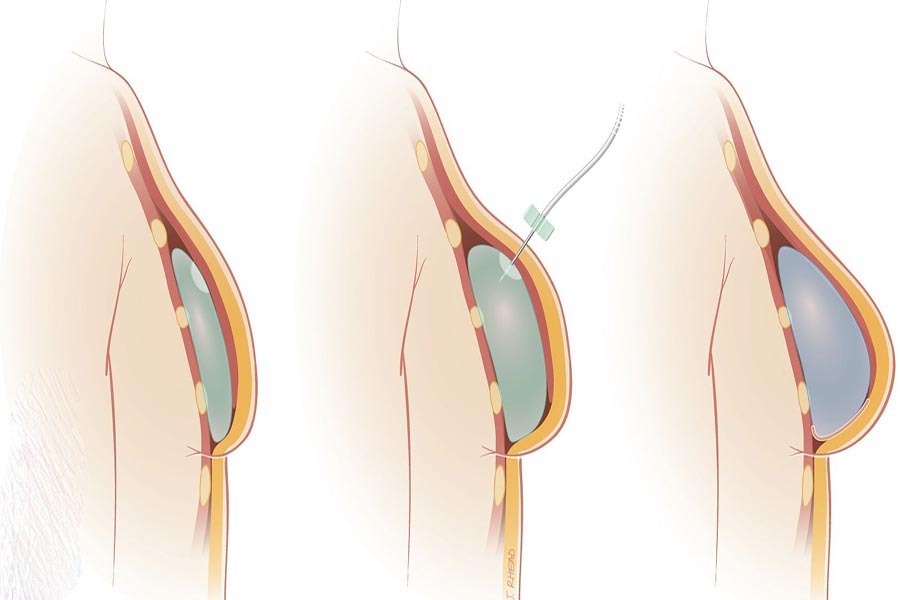
Breast prosthesis
November 27, 2020
Lip prosthesis
November 27, 2020What is a hips prosthesis?
Hip prosthesis: Until recently, breast, cheek, lip and breast prostheses were commonly performed in people, but for some time now, hip augmentation with prosthesis along with fat injection into the buttocks has become common among women and has its own fans.
A prosthesis in the hip area makes the buttocks prominent and clustered, and people are satisfied with their body. Women who want to have this prosthesis can enlarge and highlight their buttocks through prosthesis and hip lift. People with different motivations take action to do this.
The prosthesis for the buttocks is made of a silicone layer and is completely flexible. In its construction and production, it has been tried to be completely natural and designed and made similar to a natural buttock. To perform this operation, like the breast prosthesis operation, prostheses with different types are used, and the choice of the type of prosthesis should be made with the opinion of the surgeon.
It should be borne in mind that the large operation of dying the buttocks with a prosthesis is as risky as other cosmetic procedures such as nose surgery. Before performing hip surgery, the surgeon should talk to the patient about the complications of hip replacement and enlargement with prosthesis, the costs of the operation and the type of prosthesis, and give the necessary information to the person who intends to perform hip prosthesis surgery. Has decided to perform prosthetic surgery with sufficient awareness.
The point that should be considered in performing hip surgery and placement of prosthesis is that to place the prosthesis, only fat should be applied under the skin and fat in the deep layers of the buttocks should be strictly avoided due to the possibility of embolism. For this reason, it is better for the patient to have enough information about the operation before the hip prosthesis operation and to talk to the doctor about these issues before the hip operation.
Before and after hip surgery
The ideal candidate for hip surgery with a prosthesis
People perform cosmetic hip augmentation with different purposes. Some women feel that their buttocks have never fully developed. While others like to make their hips bigger and rounder.
But the most important goals of people for cosmetic hip prosthesis surgery are:
Eliminate hip problems and increase self-confidence
Larger and more prominent buttocks
Achieving a balanced and beautiful body and improving the appearance of the buttocks in people who have congenital problems in this area.
In order for the patient to get the desired result from the hip prosthesis operation, he should consult with the doctor before the operation and state the purpose of this operation.
The location of the prosthesis inside the hip
The location of the hip prosthesis should be such that it does not damage the nerves and bone areas of the hip area and is away from them. Prostheses can be placed in three parts of the hip area:
Under fascia
The labia of the buttock muscles
Below the hip muscles
Slits are usually made in the hollow part of the buttocks so that the location of the slits is not clear. The hip prosthesis operation takes 2 hours and the patient undergoes general anesthesia during the operation.
Postoperative care Hip shaping with prosthesis
Usually, after the hip prosthesis operation, the tissues start to repair and 6 months after the hip resurfacing operation, they completely recover and the buttocks take on the desired shape. Use a hip brace to relieve swelling caused by hip port surgery.
Complications of using a prosthesis in the hip
The main reason for performing such beauty procedures is to make changes in appearance and achieve the ideal body and increase beauty; In general, any surgery, including cosmetic surgery, is associated with an error rate.
Therefore, all safety points before, after and during hip prosthesis surgery should be observed to prevent these complications and errors. Hip prosthesis surgery, like all surgeries, has its own risks and risks. These risks include infection, bleeding, rupture, and more. The patient must be aware of the disadvantages of the surgery before undergoing surgery, as well as the benefits of the surgery.
Complications of surgically implanting a prosthesis to shape the buttocks include an infection that occurs based on the incisions made and the scar caused by the incision on the buttocks. The surgeon must have sufficient experience and skill and be able to select the best points for the incision. Another problem that may occur after hip replacement surgery is the possibility of moving the prostheses inside the hip, which causes asymmetry of the hip.
Broken and torn prosthesis is another complication of this surgery.
Feeling pain after a breast prosthesis is one of these side effects that your doctor prescribes painkillers to soothe this pain. Under no circumstances should aspirin or ibuprofen be used until 2 weeks after implant surgery.
Postoperative bruising on the buttocks that can be removed after two to three weeks.
In rare cases, there may be an accumulation of blood or hematoma in the person, in which case extra blood must be removed.
How to insert a hip prosthesis with a silicone prosthesis
Touch sensation after cosmetic hip surgery
It is possible that the person’s sense of touch around the wound may decrease and this condition may continue for up to 3 months.
The hip area hardens and swells after hip surgery with a prosthesis, and this condition may continue for several months.
Wounds are less than 5% more likely to develop around the prosthesis, which can cause the buttocks to tighten and cause an abnormal feeling of pain in the person.
It is possible that excess fluid will accumulate around the prosthesis, which of course is enough Yar is rare and in case of this condition, this water should be removed.
Cost of hip prosthesis
In addition to the surgeon’s salary, hip prosthesis surgery depends on other factors such as the type of prosthesis and its price and the cost of the clinic and hospital where the surgery is performed. The cost of hip replacement surgery will be about 5 million, but this cost is only the surgeon’s salary.
Method of hip prosthesis surgery
Before anesthetizing the patient, the surgeon re-examines the markings to determine the proper placement of the prostheses, and there are a variety of methods for doing so, but in short, when the patient is standing, two horizontal lines, one parallel to the iliac spine. One on the back and the other parallel to the crease below the hips at the junction with the thigh.
The surgeon then divides the distance between the two lines into three equal parts. The lower third bears the weight of the body when sitting and the prosthesis should not be placed in that part. So they remove this part and usually place the maximum protrusion of the prosthesis in the middle third and then prepare the patient for anesthesia.
Hip implants can be performed under general anesthesia or lumbar anesthesia (spinal or epidural procedures) and intravenous hypnotics, but general anesthesia is commonly used. The patient is then placed on his stomach and preparations are made to begin surgery.
Types of incisions for hip prosthesis contracts
Various incisions are used to insert the prosthesis into the hip, including:
1- In the upper part of the buttocks on both sides
2- In the crease below the buttocks at the junction with the thighs on both sides
3- On the inside of each side of the buttocks, which are hidden between the two sides in China
4. A single incision in the lower part of the external bone in China is between the two hips.
The incision is usually made with the least amount of complications, 5 to 8 cm in the midline above the crease between the two buttocks and the bottom of the sacrum.
The incision is made because it is single and has a good distance from the anus and the associated infections, has the least chance of infection and is covered by the surrounding tissues and is not detectable, which is why most plastic surgeons use this incision.
After the incision is made, the surgeon creates enough space to place the prosthesis inside both hips and inserts the prosthesis.
Two common areas for prosthesis placement are:
Above the hip muscles (below the fascia)
Between the layers of the main hip muscle
After ensuring the symmetry of the two sides, at the surgeon’s discretion, they first close the muscle and fascia on each side (the hard layer on the muscle) and then suture the midline incision in several layers and bandage it in the last step.







